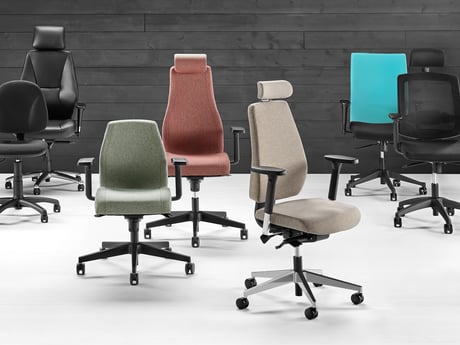How to design the perfect conference room

A well-planned conference room is a creative and functional space where many different personalities can work together and enjoy themselves. "It is important to have a calm harmonious space. Remember, the people in the meeting room also add a lot of colour!" says Camilla Hassbjer, an interior design consultant and project manager specialising in businesses and public spaces.
The first step when setting up a conference room is to do a thorough analysis of your needs. What will the room be used for? How many seats are needed? What technology should be available? What kind of conference room furniture will work best?
"Sometimes, it’s enough to have one large meeting table, but many businesses want to be able to switch between a classic boardroom set up and a layout that better suits small group discussions. Choose a flexible solution with small modular tables that can be put together to form one bigger table", says Camilla Hassbjer.
Textiles improve the acoustics
It is also important to look at the room itself, especially with regard to light and sound. "It’s really important to listen to the acoustics and add textiles in the form of carpets and curtains to soften the room. This can also be considered when choosing conference furniture: choose chairs with a fabric cover," Camilla suggests.
As for the light, it is important to have good and functional lighting in the meeting room. "I like to work with indirect light, it does a lot for the ambiance in the room and adds warmth. I also recommend being able to dim the light and change it depending on the activity," says Camilla.
Technology should be incorporated from the start
Having the right technology is a must for an effective conference room and should be included in the planning from the very beginning. This prevents cables from being placed across the floor, which increases the risk of tripping.
"As an interior designer, I want any cables to be almost unnoticeable. Therefore, I recommend using a cable box recessed in the table or under the desk," says Camilla. A projector and a screen are available in most conference rooms, but don’t forget that a flip chart or whiteboard is also helpful for writing notes and sharing ideas.
Colours are important
Colours will have an impact on the atmosphere in the room. "Start by looking at the room’s character. Look at the floors and the walls and choose materials and colours that go together in order to create a balance. I think it’s important to stick to calm colours since all of us as individuals add colour to the meeting room as well," says Camilla.
Five things to think about:
Furniture: Should you opt for flexible furniture so you can adapt the room to different needs or is heavy boardroom furniture suitable?
Sound: Are the acoustics in the room going to create a good working atmosphere? If not, can you add textiles to improve the situation or do you need purpose-built acoustic panels?
Light: Is the lighting adequate? Consider the general lighting conditions as well as whether the light is suitable for working. Can you dim the lights for presentations?
Technology: What do you need to be able to do in the room? What technology do you need to support you and how can you integrate it into the design?
Colour: How can the colours and materials in the room be used to create a more harmonious environment?


